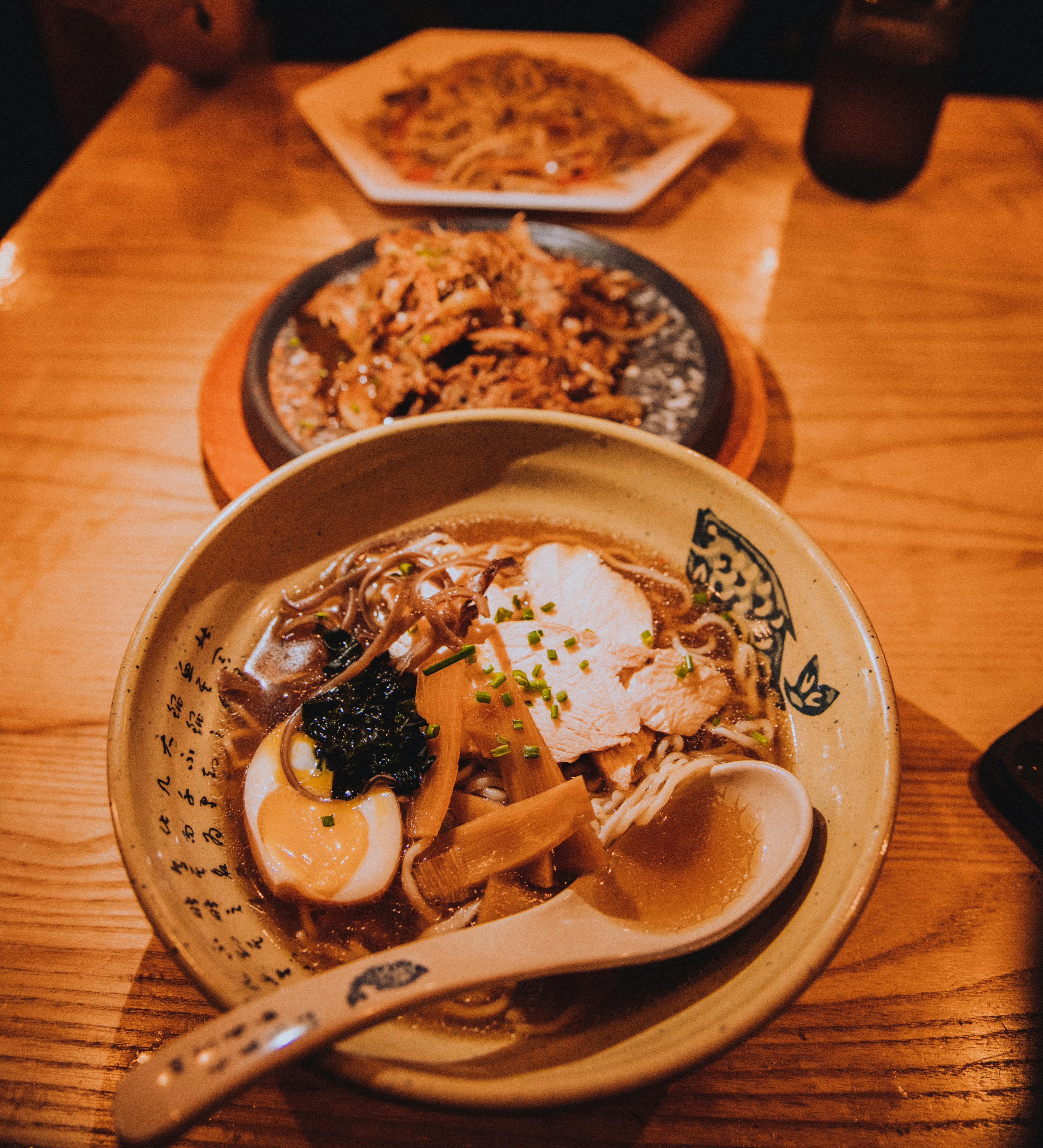So you’ve heard of Western medicine, but have you ever wondered about the healing practices of other cultures? Well, look no further because today we’re taking a journey into the fascinating world of traditional Mexican medicine. With a history that dates back thousands of years, this ancient healing tradition has been passed down through generations, offering natural remedies and wisdom for both physical and spiritual ailments. From herbal remedies to energetic healing practices, traditional Mexican medicine offers a unique perspective on wellness that continues to thrive in modern times. Get ready to explore a world where tradition meets healing, as we uncover the secrets of this ancient medicinal practice.

History of Traditional Mexican Medicine
Traditional Mexican medicine has a rich history that dates back thousands of years. The origin of traditional medicine in Mexico can be traced back to the indigenous peoples who inhabited the region long before the arrival of the Spanish colonizers. These indigenous cultures had a deep understanding of the medicinal properties of plants and herbs and used them to treat a wide range of ailments.
The influence of indigenous cultures on traditional Mexican medicine cannot be overstated. These cultures, such as the Aztecs and Mayans, developed sophisticated medical systems that were based on a holistic approach to health. They believed in the interconnectedness of the body, mind, and spirit, and sought to restore balance and harmony within the individual.
However, with the arrival of Spanish colonizers in the 16th century, the practice of traditional medicine in Mexico faced a significant challenge. The Spanish brought with them their own medical practices, which were based on European medical traditions. As a result, a blending of indigenous and Spanish medicinal practices occurred, leading to the emergence of a unique form of traditional Mexican medicine that incorporated elements of both cultures.
Key Concepts of Traditional Mexican Medicine
Balance and harmony in the body are fundamental concepts in traditional Mexican medicine. Practitioners believe that illness is caused by an imbalance or disruption in the body’s natural equilibrium, and the goal of treatment is to restore this balance. This is achieved through various means, including herbal remedies, spiritual cleansings, and massage and bodywork.
Energetic principles also play a crucial role in healing within the traditional Mexican medicine framework. Practitioners believe that all living beings possess an energy or life force, known as “qi” or “vital energy.” This energy flows through the body and can become blocked or imbalanced, leading to illness. Techniques such as acupuncture and moxibustion are used to help restore the flow of energy and promote healing.
Emphasis on prevention is another key principle of traditional Mexican medicine. Practitioners believe that it is essential to maintain overall health and wellbeing to prevent the onset of illness. This includes adopting a healthy lifestyle, eating a balanced diet, and incorporating regular exercise into one’s routine. Traditional Mexican medicine also places great importance on the power of rituals and ceremonies in promoting wellness and preventing disease.
A holistic approach to health is at the core of traditional Mexican medicine. Practitioners view health as a complex interaction between the physical, mental, and spiritual aspects of an individual. Rather than focusing solely on the symptoms of an illness, traditional Mexican medicine seeks to address the underlying causes and restore balance in all areas of a person’s life.
Practitioners of Traditional Mexican Medicine
Curanderos and curanderas are the primary practitioners of traditional Mexican medicine. These individuals are healers who have inherited ancient knowledge and traditions from their ancestors. They possess a deep understanding of plants and herbs and use them to create remedies and treatments for various ailments. Curanderos and curanderas often combine their knowledge of herbal medicine with spiritual practices, such as prayer and energy healing.
Herbalists are also integral to the practice of traditional Mexican medicine. They specialize in the identification, preparation, and administration of medicinal plants and herbs. Herbalists have a profound understanding of the healing properties of different plants and use this knowledge to create customized treatments for their patients.
Bone-setters are traditional healers who specialize in treating musculoskeletal injuries and conditions. They use a combination of manual techniques, such as massage and manipulation, to restore proper alignment and promote healing. Bone-setters have a deep understanding of the human body and can often diagnose and treat conditions that may be difficult to address using conventional medicine alone.
Traditional midwives play a crucial role in women’s health within the traditional Mexican medicine framework. They provide care and support to women during pregnancy, childbirth, and the postpartum period. Traditional midwives incorporate herbal remedies and traditional birthing practices into their care and believe in the power of natural childbirth and the importance of postpartum healing rituals.
Traditional Mexican Healing Techniques
Herbal remedies are a cornerstone of traditional Mexican medicine. There is an extensive range of plants and herbs used for various purposes, from treating common ailments to promoting overall wellbeing. Herbal remedies are often prepared as teas, tinctures, or poultices and are tailored to the individual’s specific needs.
Massage and bodywork are widely used techniques in traditional Mexican medicine. Different types of massage, such as Swedish massage or deep tissue massage, are employed to promote relaxation, reduce muscle tension, and improve circulation. Bodywork techniques, such as the use of hot stones or herbal compresses, can also be utilized for their therapeutic benefits.
Rituals and ceremonies are an essential part of traditional Mexican medicine. These practices are believed to have a profound effect on a person’s wellbeing and can be used to address spiritual or emotional issues. Rituals often involve the use of symbols, prayers, and incense, and can be tailored to the individual’s specific needs.
Acupuncture and moxibustion are ancient healing techniques that originated in China but have been incorporated into traditional Mexican medicine. Acupuncture involves the insertion of thin needles into specific points on the body to restore the flow of energy and promote healing. Moxibustion involves the use of heated herbs on or near acupuncture points to stimulate the flow of energy.
Spiritual cleansings are another important healing technique in traditional Mexican medicine. These cleansings are performed using various methods, such as the burning of herbs or the use of sacred objects, to clear negative energy and promote healing. Spiritual cleansings are believed to have a powerful impact on a person’s overall wellbeing and can be done individually or as part of a larger ceremony.

Common Traditional Mexican Medicinal Plants
Nopal, also known as prickly pear cactus, is a widely used medicinal plant in traditional Mexican medicine. It has been traditionally used to treat digestive issues, such as indigestion and constipation. Nopal is also believed to have anti-inflammatory properties and can be used to alleviate joint pain and swelling.
Manzanilla, or chamomile, is another commonly used medicinal plant in traditional Mexican medicine. It is known for its calming properties and is often used as a tea to promote relaxation and improve sleep. Manzanilla can also be used topically to soothe skin irritations and treat minor wounds.
Hierba del Sapo, or Mexican poppy, is a powerful medicinal plant used for its analgesic properties. It is often used to alleviate pain and inflammation and can be applied topically or taken internally as a tea or tincture. Hierba del Sapo is commonly used to treat headaches, muscle aches, and menstrual pain.
Ruda, or rue herb, is a traditional Mexican medicinal plant known for its antispasmodic and carminative properties. It is often used to treat digestive issues, such as indigestion and bloating. Ruda is also believed to have protective and cleansing properties, and is used in spiritual cleansings and rituals.
Coco, or agave, is an important medicinal plant in traditional Mexican medicine. It is often used for its antimicrobial properties and can be used to treat various skin conditions, such as wounds, burns, and insect bites. Coco is also believed to have anti-inflammatory properties and can be taken internally to support digestive health.
Traditional Mexican Medicine for Digestive Health
Traditional Mexican medicine offers a range of herbal remedies for indigestion and other digestive issues. Some commonly used plants include aloe vera, ginger, peppermint, and chamomile. These plants are known for their soothing and anti-inflammatory properties and can help alleviate symptoms such as bloating, gas, and stomach cramps.
Mayan traditional foods also play a significant role in promoting gut health within traditional Mexican medicine. The Mayan civilization had a deep understanding of the importance of a healthy gut and incorporated foods such as chia seeds, cocoa, and corn in their diet. These foods are rich in fiber, antioxidants, and other essential nutrients that support a healthy digestive system.
The use of medicinal plants is also prevalent in traditional Mexican medicine for treating specific stomach ailments. Plants such as aloe vera, yerba buena, and peppermint are often used to alleviate symptoms of gastritis and stomach ulcers. These plants can help reduce inflammation, soothe the stomach lining, and promote healing.

Traditional Mexican Medicine for Respiratory Conditions
Traditional Mexican medicine offers a range of herbs and remedies for common respiratory conditions such as cough and congestion. Plants such as eucalyptus, oregano, and thyme are often used for their expectorant and decongestant properties. These plants can help loosen mucus, clear the respiratory passages, and provide relief from cough and congestion.
Steam therapy is a widely used technique in traditional Mexican medicine for respiratory relief. This involves inhaling steam infused with medicinal herbs to help open up the airways and relieve congestion. Plants such as eucalyptus, chamomile, and rosemary are commonly used for their therapeutic properties in steam therapy.
Traditional remedies for asthma and bronchitis also exist within traditional Mexican medicine. Plants such as mullein, yerba santa, and boswellia are believed to have anti-inflammatory properties and can help reduce bronchial spasms and promote easier breathing. These plants are often used in herbal teas or tinctures to provide relief from asthma and bronchitis symptoms.
Traditional Mexican Medicine for Women’s Health
Traditional Mexican medicine offers a range of herbal treatments for menstrual pain. Plants such as chamomile, damiana, and marigold are often used for their relaxing and analgesic properties. These plants can help alleviate cramps, reduce pain, and promote overall comfort during menstruation.
Traditional birthing practices play a significant role in women’s health within the traditional Mexican medicine framework. Traditional midwives provide support and care to women during pregnancy and childbirth, incorporating various traditional techniques and rituals. These can include the use of medicinal plants, massage, and spiritual ceremonies to promote a healthy and positive birthing experience.
Postpartum herbal remedies and rituals are also an essential part of traditional Mexican medicine for women’s health. Plants such as motherwort, rosemary, and lavender are often used for their calming and healing properties. These plants can help soothe the body, reduce postpartum discomfort, and promote emotional wellbeing during the postpartum period.

Incorporating Traditional Mexican Medicine into Modern Health Practices
The integration of traditional Mexican medicine with conventional medicine is gaining recognition and popularity. Many healthcare practitioners today recognize the value of incorporating traditional healing practices into modern healthcare systems. This integrative approach allows for a more comprehensive and holistic approach to health, addressing both the physical and spiritual aspects of an individual’s wellbeing.
Education and training of traditional healers are essential in preserving and promoting traditional Mexican medicine. Efforts are being made to ensure that traditional healers receive proper training and support to continue their important work. Institutions and organizations are offering educational programs and workshops to educate and empower traditional healers with the knowledge and skills needed to practice safely and effectively.
Recognition and preservation of indigenous knowledge is also an important aspect of incorporating traditional Mexican medicine into modern health practices. Indigenous communities and their traditional healing practices hold a wealth of knowledge and wisdom that should be respected and preserved. Efforts are being made to document and protect this knowledge, as well as to ensure that indigenous communities have a voice in decisions regarding their own healthcare practices.
Contemporary Challenges and Future Outlook
Despite the rich history and significant contributions of traditional Mexican medicine to healthcare, there are some contemporary challenges that need to be addressed. One of these challenges is the loss of traditional knowledge. As modernization and globalization continue, younger generations may be less inclined to pursue traditional healing practices, leading to a decline in knowledge transmission.
Another challenge is the commercialization and cultural appropriation of traditional Mexican medicine. As traditional healing practices gain popularity, there is a risk of these practices being exploited for profit without proper respect for the cultural and spiritual significance they hold. Efforts must be made to ensure that traditional healers are recognized and respected, and that the benefits of traditional Mexican medicine are accessible to all.
The role of traditional medicine in global healthcare is an important topic of discussion. Traditional practices, such as those found in traditional Mexican medicine, have the potential to complement and enhance modern medical approaches. By incorporating traditional healing practices into mainstream healthcare systems, we can create a more integrative and holistic approach to health that recognizes the value of both conventional and traditional medicine.
In conclusion, traditional Mexican medicine has a rich history and offers unique perspectives on health and healing. The interplay between indigenous cultures, Spanish colonization, and modern influences has shaped the practice of traditional Mexican medicine as it exists today. Its key concepts, practitioners, healing techniques, and use of medicinal plants highlight the holistic and preventative approach to health. By recognizing and preserving traditional knowledge, integrating traditional healing practices with conventional medicine, and addressing contemporary challenges, traditional Mexican medicine can continue to play a vital role in global healthcare.

